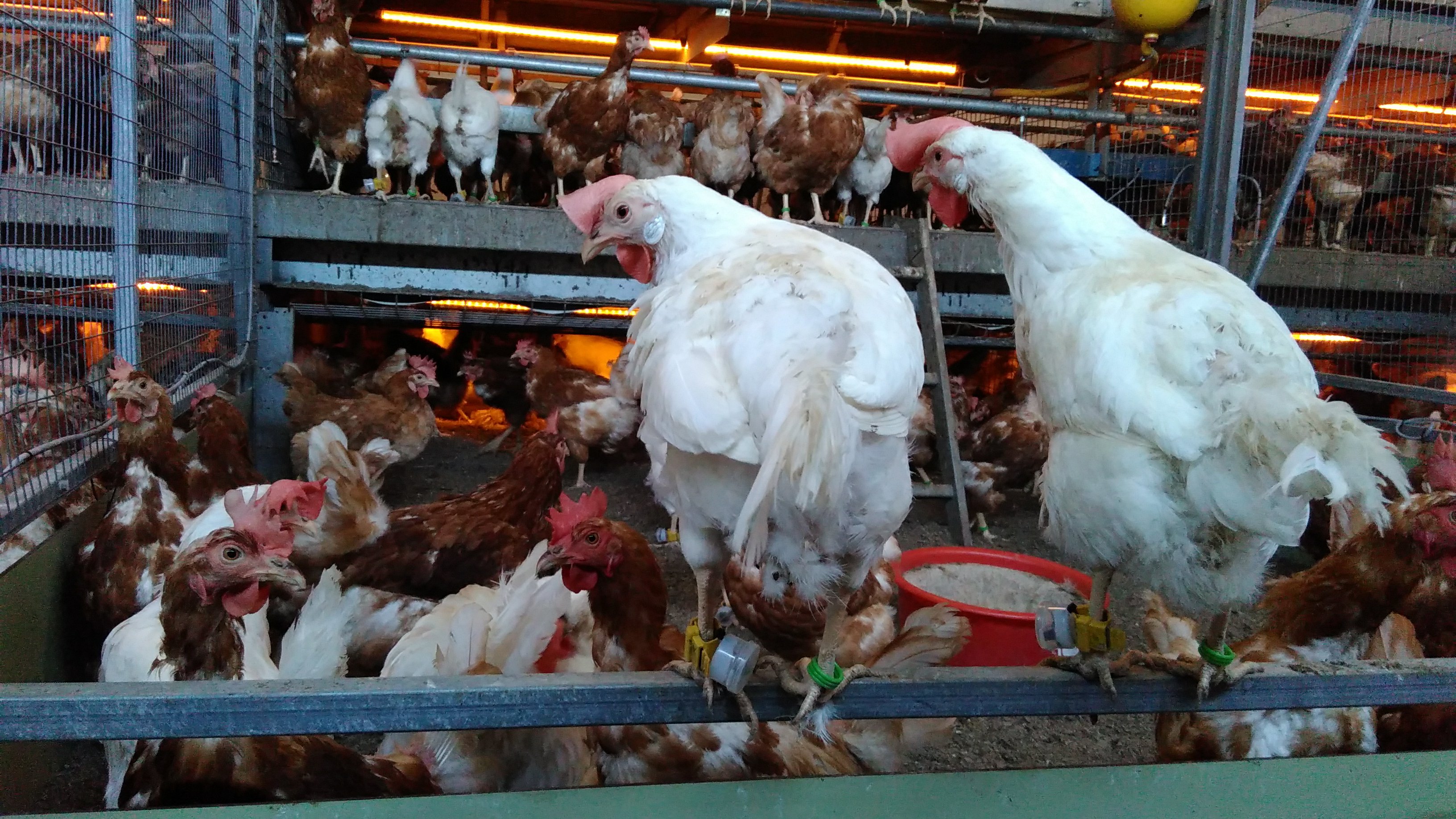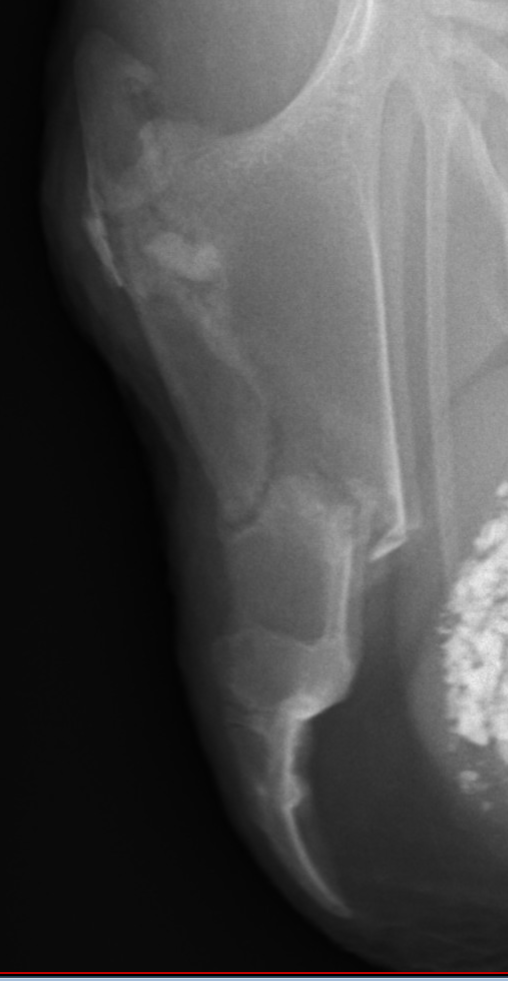



Keel bone damage raises welfare concerns
Two Swiss research projects evaluate how keel bone damage impacts behaviour, productivity and mobilityWords Melanie Epp
Animal welfare legislation in many European countries, including Switzerland, states that animals must be housed in a way that means normal biological behaviour is not impeded. Yet, in some cases, up to 97 percent of birds in a single housing unit will have keel bone fractures in different states of repair. Their impact on locomotion, behaviour and productivity is still unknown. To address this issue, Christina Rufener, Ana Rentsch and their supervisor, Dr Michael Toscano, all from the Center for Proper Housing, Poultry and Rabbits (ZTHZ) in Switzerland are conducting research on how keel bone damage impacts hen behaviour, productivity and mobility.
While we like to think that laying hens experience better quality of life in cage-free housing systems, what if all that movement leads to bone damage, which causes pain that inhibits natural behaviour? To answer this question, Ana Rentsch closely monitored 12 behaviours in 80 hens kept in eight experimental pens. Smaller spaces were chosen because of the difficulty in closely monitoring individual hens in commercial barns.

Hens wore numbered vests and cameras recorded the frequency and duration of the different behaviours at five stages of growth: three times between 26 and 30 weeks of age, and then again at the 37th and 39th week. To assess keel bone damage, hens were radiographed at the end of the 30th, 37th and 39th week of age.
“On the X-ray images I could see whether the keel bone was broken or not and even further distinguish between fractures with open fracture gaps that are assumed to be new or unhealed fractures,” said Rentsch. “Fractures without an open fracture gap are probably older and healed to some extent.”
Using this data, she could then test whether hens had new fractures, healed fractures or no fractures at all, and compare it with behaviour data. To determine if the behavioural differences were truly a result of pain due to keel bone damage, Rentsch administered an analgesic during half of the observation periods and monitored the birds closely.
Preliminary results show that new keel bone fractures decrease movement between the different levels of the barn. “So we can say that keel bone fractures impact vertical locomotion while the fracture gap is still visible on X-ray images,” said Rentsch. “We also saw that the walking pace on the ramp was not different for birds with fractures compared to birds without.”
“Contrary to my expectations, the analgesic did not reduce the effect of the fractures on this vertical locomotion,” she continued.
Furthermore, preliminary results showed that while vertical locomotion is impaired by fresh fractures, walking pace on ramps is not impacted. “This suggests that hens with keel bone fractures can reach different levels using ramps while they would be less likely to do so otherwise,” said Rentsch. “Hence, hens with keel bone fractures would benefit from ramps connecting the different levels within an aviary.”

In the second study, researcher Christina Rufener examined how keel bone damage impacts the productivity and mobility of layers in aviary systems. In the first part of the study, she collected eggs from 150 focal hens approximately once a month for five days at 22 weeks of age until 61 weeks of age. By administering capsules containing dye, she was able to match the hen-specific coloured patterns in the yolk and see which hens laid which eggs. Eggs were counted and weighed, and shell strength and width were measured to calculate performance. In total, Rufener says she identified more than 7,000 eggs and analyzed over 1,600 radiographs.
After egg collection, all 150 focal hens were x-rayed for fractures. On average, each hen had three fractures. Only one had no fractures at all; one had a total of 15 fractures.

Preliminary results also showed that with increasing age, hens with extremely severe keel bone fractures laid fewer eggs the more severe their fractures were. “Hens with extremely severe keel bone fractures laid approximately 16 percent fewer eggs than hens with no fractures at the age of 61 weeks,” said Rufener. “This suggested that hens could maintain their high productivity until shortly after peak of lay – so 37 weeks – but repartitioned their resources from reproduction towards the fractures later.”
In the second study, Rufener used an infrared tracking system to track hen mobility to see whether or not it was impacted by keel bone damage. The tracking system recorded hen movement through five zones: the winter garden, litter, lower tier, nest box tier and upper tier.
“We collected data approximately once a week for six days per time point and X-rayed hens afterwards,” Rufener explained. “We could then relate keel bone fracture severity with the total number of transitions between zones and the duration of stay in each zone.”

Preliminary results show that there is no link between fractures and the total number of zones a hen crossed per day. “This is not what we expected,” said Rufener. “We predicted that hens with fractures would be in pain and therefore move less.”
“However, there seems to be a shift in location,” she continued. “With increasing fracture severity, hens spend more time on the top tier and less time in the litter and lower tier.”
It should be noted that food and water were available on the top tier, and the nesting box was only one tier away. As a result, it may be that hens spend time in the top tier to avoid movement or because they feel safer there.
Both Rentsch and Rufener’s studies make the case for the use of ramps in cage-free, tiered aviary systems. Connecting the different tiers should facilitate movement between tiers and reduce the keel bone damage that results from falls and collisions.
ZTHZ is a collaborative research centre between the University of Bern and the Federal Food Safety and Veterinary Office of Switzerland. The keel bone damage projects where funded by grants from the Swiss Federal Food Safety and Veterinary office.
This article was first published in the July 2018 issue of Poultry Digital Magazine












